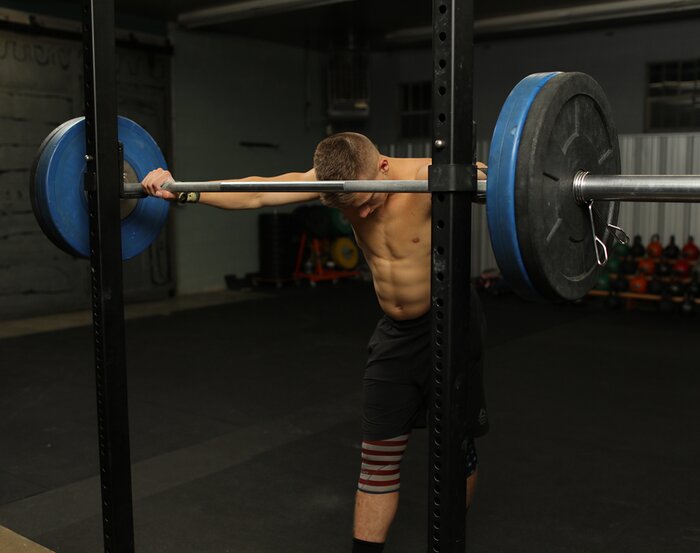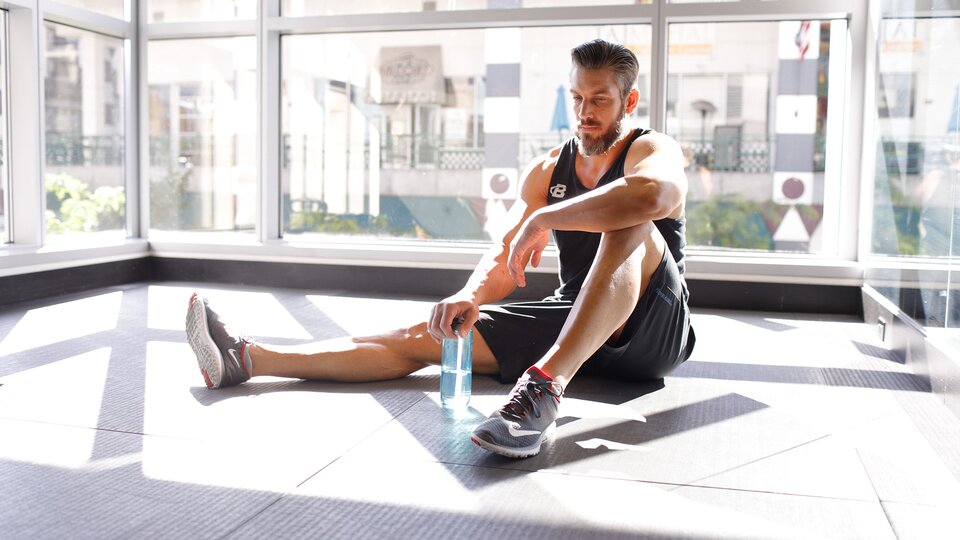Products You May Like
Why do muscles fatigue? First, fatigue is a safety mechanism that stops us from causing greater damage to our bodies. From a physiological perspective, muscle fatigue is the inability to maintain power output. Some forms create change at the molecular level in the muscle and cause peripheral fatigue, such as physical exercise, whereas others involve the brain, or reduced hormone levels, and lead to deteriorating energy levels and performance. Most of the studies that examine fatigue focus on the neuromuscular system, but in fact, all organs are involved.
Some of the causes of muscle fatigue are:
- Depletion of phosphocreatine concentration
- Accumulation of hydrogen (H+) and changes in pH values
- Depletion of glycogen in muscle and decreased glucose in the blood
Sleep, recovery, and proper diet are all critical for reducing muscle fatigue. Sleep deprivation results in reduced protein synthesis, which decreases the body’s ability to restore muscle damage. Without proper recovery, muscle growth will be stunted and exercise-induced stress will remain high. And, of course, without proper nutrition—especially protein intake—energy levels will decline and muscles will begin to waste away.
Fatigue can be broken down into two general categories: acute fatigue and overtraining fatigue.
Acute Fatigue
Acute fatigue generally refers to exercise-induced fatigue. Compared to a consistent drop in energy levels, acute fatigue is often an everyday occurrence. Possible sites of exercise-associated acute fatigue can be:
- Accumulation of lactates
- Inhibition of the Ca2+ release of the sarcoplasmic reticulum
- Glycogen stores decline
- Inhibition on motor neural drive
- Cytokine released during exercise
Overtraining Fatigue
Overtraining fatigue represents a more serious physiological problem. It usually occurs when the balance between training and recovery is disproportionate. The average man loses 1 percent of his muscle mass after age 30. If schedule and training are not adjusted to allow proper recovery for this reduction in capacity, overtraining-induced fatigue may occur.

While long-term decreased training capacity can occur without any evident physiological or psychological signs of overtraining, it could also reflect on mood state, immune system, biochemistry profile, sleep, etc.
Recovery from overtraining could last from 4 weeks to 6 months or even a year. Overtraining can even lead to a reduction in your capacity to produce ATP.
What is ATP?
Adenosine triphosphate (ATP) is the body’s ”molecular currency,” created during the Krebs cycle (also known as the citric acid cycle). Carbohydrates are the predominant fuel source and the reactions that make up the cycle require oxygen, which is why it is also known as “aerobic” metabolism.
Prolonged, low-intensity exercise activities, such as walking and cycling, require a great deal of oxygen to run this cycle and generate the needed energy. In contrast, high-intensity sports that rely on repeated short bursts of energy use anaerobic (no oxygen) metabolism. Weightlifting is classified as an anaerobic activity.
Oxygen is not necessary during anaerobic exercise since ATP is needed at rates that exceed aerobic metabolism. ATP converts to adenosine diphosphate (ADP) and can only sustain a high-intensity movement for a few seconds. This timeframe can be extended using phosphocreatine. Phosphocreatine donates a phosphate group to convert ADP back to ATP, thereby extending the time the body can perform high-intensity exercise.
This process happens naturally, as we have endogenous creatine stores. However, supplementation with creatine increases phosphocreatine stores to extend the anaerobic timeframe for high-intensity exercise. Here is a list of ingredients that help extend ATP production:
Muscle Burn Out vs. Mental Burn Out
So far, we’ve been discussing muscle burnout, which is primarily caused by insufficient levels of energy and changes in pH values due to lactate and H+ accumulation.
Mental burnout is a combination of several physiological factors, including CNS inhibition and hormone imbalance. The production of cortisol, a stress hormone, is higher under these circumstances. This scenario influences our mood and will affect exercise and training.
How to Combat Muscle Fatigue
Since fatigue usually develops because of low energy levels (phosphocreatine and ATP), it is logical to assume that creatine supplementation can tackle both chronically low energy and acute fatigue.

Creatine can also act as an antioxidant, improve mitochondrial activity, increase exercise capacity, and delay muscle fatigue. It can increase strength, power, and total workload, and it is the ultimate supplement to enhance performance and delay fatigue. It appears 3-5 grams of creatine per day is sufficient to increase muscle phosphocreatine levels.*
Beta-alanine is a nonessential amino acid produced in the liver, and when combined with L-histidine forms a dipeptide called carnosine. Intracellular acid-based regulation is the main physiological role of carnosine, but it’s functions also include protection from oxidative damage, glycation, and regulation of calcium sensitivity.
Intramuscular carnosine helps regulate acidity produced during high-intensity anaerobic activities. As the training load increases, lactate production increases and pH decreases. This leads to a decrease of force production and an increase of fatigue. A limiting factor in carnosine synthesis is the lack of availability through dietary intake. A number of studies reported an increase in muscle carnosine through beta-alanine supplementation, suggesting it is justified and more efficient than absorbing it through nutrition.
Hydroxymethylbutyrate (HMB) is another ingredient with anti-catabolic characteristics, meaning it aids in preventing muscles from breaking down. It can also decrease muscle damage after strenuous workouts and has been shown to have positive effects on strength, aerobic and anaerobic performance, body-fat reduction, and increases in muscle mass.*
Preventing Muscle Soreness for Improved Capacity
Multiple actions can be taken to prevent muscle soreness. Immediately after exercise there is a window of opportunity to consume glucose, electrolytes, and proteins. Various supplements can also help in preventing muscle soreness. Intake of the amino acid leucine, most effective when taken as hydroxymethylbutyrate (HMB), can improve recovery and help to rebuild the muscle.*
Hydrogen therapy is proving to be a novel recovery aid, most effective when taken by drinking or bathing in hydrogen-rich water. A hydrogen water bath immediately after high eccentric training may also enhance recovery and decrease muscle damage biomarkers. Hydrogen (H2) has been shown to decrease inflammation in the muscles after heavy exercise.
How to Combat Mental Fatigue
Mental fatigue can emerge due to factors such as oxidative stress, sleep deprivation, and mitochondrial dysfunction. Many studies have evaluated the effects of essential fatty acids, vitamins, and minerals without any significant improvements detected for these outcomes. However, molecular hydrogen (H2) is demonstrating to be one of the most effective and clinically validated therapeutics for a wide range of outcomes. H2 can selectively reduce free radical damage and oxidative stress, promoting redox homeostasis, which is the harmony between beneficial oxidative and nitrosative molecules and our bodies production of antioxidants.*

Long-term excessive intake of traditional antioxidants inhibits redox-sensitive signaling pathways and interferes with mitochondrial biogenesis, cardiac and skeletal muscle hypertrophy, and improvement of insulin sensitivity.
Molecular hydrogen has been shown to improve exercise performance and recovery. It has been proposed as an emerging therapy for improving cardiovascular health, and has shown to increase insulin sensitivity, in part due to its selective nature regarding free-radical scavenging.
There are several ways to administer H2, but the most feasible is through hydrogen-rich water. Emerging studies also show that drinking hydrogen-rich water can reduce fatigue and increase alertness among sleep-deprived habitual coffee drinkers equivalent to caffeine, while leading to a more robust improvement in brain metabolism than caffeine.
As mentioned, creatine supplementation can also address mental fatigue, which can be caused by low levels of brain creatine.
A third solution to fight mental fatigue is caffeine. Caffeine can act as a central nervous system (CNS) stimulant by suppressing adenosine receptors in the brain. Caffeine increases alertness and aids in the maintenance of attention, mainly in extended and demanding tasks.
One patented form of arginine, ”Nitrosigine,” has shown to improve focus, alertness, and mental stimulation in clinical research.
Choosing the best supplement can be more complicated than many think. Besides false advertising, a lot of supplements on the market—as many as 15 percent—are contaminated with illegal ingredients.
Look for supplements bearing certifications such as ”Informed Sport” or ”NSF Sport,” to ensure they have been tested for banned substances. Make sure your supplements also include clinically validated ingredients delivered in the dosages shown to be effective in the research. “Fairy dust” levels of ingredients hidden in ”proprietary blends” amount to nothing but an expensive placebo. Look for brands that proudly state what they’ve added, in what dosages, with the testing to prove it and the certifications to prove nothing else is contaminating their product.
*These statements have not been evaluated by the Food and Drug Administration. This product is not intended to diagnose, treat, cure, or prevent any disease.
